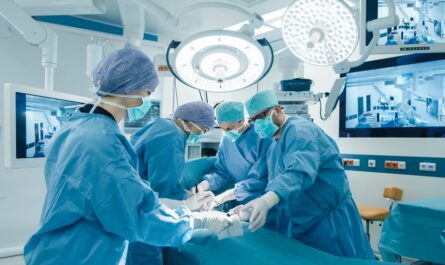What is a Closed System Transfer Device?
A closed system transfer device (CSTDs) is a medical device that mechanically prohibits the transfer of environmental contaminants into a system and the escape of hazardous drug or vapor concentrations out of a system by means of a physical state change barrier. CSTDs are designed to minimize exposure to hazardous drugs by providing a closed system of drug transfer from the point of preparation to administration. This allows for the safe handling of antineoplastic drugs and other hazardous medications known to pose risks to healthcare workers through exposure.
How do CSTDs Work?
Closed System Transfer Device work through establishing a closed network between drug vials, intravenous bags or syringes that isolates the drug from the surrounding environment. During the transfer process between containers, no environmental air is allowed to enter the system and no drug or vapor can escape. This is achieved through various mechanical design features:
– Membrane-Sealed Ports: CSTDs utilize self-sealing membrane ports that create an airtight seal when penetrated by a cannula or Spike. Once the transfer is complete, the membrane reseals itself preventing any leakage.
– Clamping Mechanisms: Many CSTDs incorporate clamps or other mechanisms to securely fasten transfer lines and containers together during the process. This helps prevent accidental disconnections that could compromise the closed network.
– Filtering Systems: Some advanced CSTDs contain microscopic air filters that scrub any gases exiting the closed pathway. This effectively traps hazardous vapors before they are released.
– Single-Handed Operation: Ergonomic designs allow for one-handed operation from setup to completion of the transfer process without needing to disconnect containers.
Benefits of Closed System Drug Transfer
By providing a contained barrier against the flow of hazardous substances, CSTDs deliver several key benefits over traditional drug handling methods:
Reduced Drug Exposure: Establishing a fully-sealed transfer pathway prevents drug aerosols, residues or vapors from escaping into the immediate work environment. This minimizes potential exposure for healthcare workers through inhalation, skin contact or ingestion routes.
Increased Safety: Closed systems reduce risk of accidental needlesticks or other incidents that could lead to unintentional exposure when manipulating intravenous bags or preparing syringes open-handed.
Less Surface Contamination: Traditional methods often involve drawing drugs through needles or spikes directly into bags, leaving surfaces contaminated with residues. Closed System Transfer Device contain the full transfer within enclosed tubing and ports.
Improved Quality: Consistent negative pressures pull drugs through with minimal waste or spills compared to gravity feed methods. Closed transfer protects sterility and maintains full drug volumes without introducing contaminants.
Ease of Use: Streamlined design and one-handed operation simplifies protocols compared to multi-step procedures needed with traditional techniques. Less manual dexterity is required reducing exertion and risk of error.
Cost Savings: Reductions in workplace injuries, health monitoring programs, hazardous waste handling and lost work hours translates to significant savings compared to open system drug handling over time.
Potential Drawbacks of Closed System Transfer Device
While closed systems have clear advantages, some drawbacks still exist:
Higher Initial Cost: CSTDs have higher device costs per use versus traditional methods. However, total costs are reduced long-term through savings on healthcare, insurance and lost work time.
Learning Curve: New techniques require education and training to become proficient compared to open methods healthcare workers are used to.
Limited Applications: Not all drugs are compatible with CSTD designs and some procedures may still require traditional handling due to technical restrictions.
Disposal Challenges: Used CSTD components contain trace residual drug and vapor amounts requiring special hazardous waste disposal protocols.
Overall, these limitations are minor compared to the enhanced protections CSTDs provide workers against hazardous occupational exposures. With increased adoption, costs will continue declining as well. Closed system transfer is becoming the preferred industry standard and an important part of any safety program for antineoplastic drug handling.
Future Advancements in CSTD Technology
As closed systems rise in popularity, new innovations aim to further streamline applications and protections:
– Integrated IV Pump Technology: Advanced systems integrate volumetric IV pumps directly into closed pathways automating precision delivery.
– Tablet Transfer Systems: Designs enable contained transfer of oral solid dose anticancer medications into IV bags resolving current limitations.
– Material Science Advances: New membrane and tubing materials provide enhanced barrier properties while maintaining flexibility, durability and ease of use.
– Analytics Capabilities: “Smart” CSTDs incorporate sensors to monitor transfer quality parameters and integrate with electronic health records.
– Expanded Drug Compatibility: More drugs achieved certification for closed system handling through ongoing testing protocols.
Closed system transfer devices have emerged as the preferred method for safely managing hazardous drugs compared to traditional techniques. By establishing a completely sealed transfer pathway, CSTDS minimize risks of exposure for healthcare workers through inhalation or contact routes. Adoption continues growing due to enhanced safety, higher quality transfers and total cost savings realized over time. Future innovations aim to expand applications and build upon design advantages that have made CSTD handling the new industry standard.
1. Source: Coherent Market Insights, Public sources, Desk research
2. We have leveraged AI tools to mine information and compile it.


